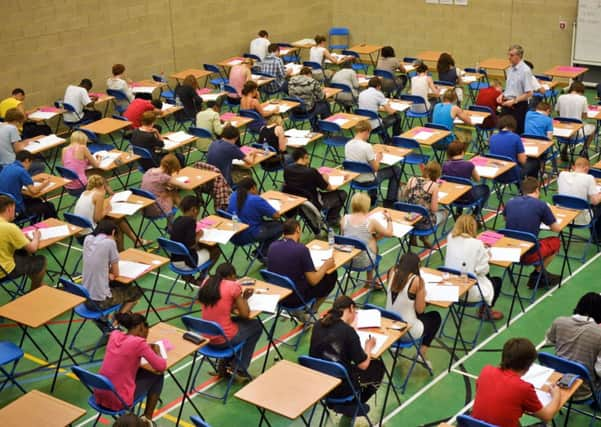Warning over marking mistakes as A-level results day arrives


Jonathan Taylor, the headmaster at Bootham School in York, suggested exam boards could not cope with the workload and that mistakes were increasingly creeping in.
He warned that this would disadvantage pupils at schools which did not have the resources to effectively challenge marking on their behalf.
Advertisement
Hide AdAdvertisement
Hide AdExperts say they expect A-level grades to be broadly in line with last year. Results had improved for almost 30 years before 2012 when they declined and there was another dip last year.


Mr Taylor said: “This week’s results should show some consistency with past years - but we will be watching carefully for mistakes in marking. This has become a real blight on results day in recent years - Bootham has had to challenge the marks awarded to several candidates each year just because the exam boards can’t cope with the workload and errors creep - or rush - in.”
In the past two years the school have requested more than 400 remarks because of concerns over the marking. In 2012 eight A-levels, five AS levels and 21 GCSEs were regraded and many more papers remarked as a result of this.
Hundreds of thousands of students will receive their A-level grades today, allowing them to make vital decisions about their future, such as heading off to university, starting a training courses or getting a job.
Advertisement
Hide AdAdvertisement
Hide AdLast year, just over one in four entries (26.3 per cent) scored an A* or A, down 0.3 per cent on the year before. The fall was believed to be the second biggest drop in the history of the qualifications.
A* - the very top grade - also dipped last summer, with 7.6 per cent of exams scoring the mark, compared with 7.9 per cent in 2012, while the overall A*-E pass rate rose by 0.1 per cent to 98.1 per cent.
The national picture also showed that boys pulled further ahead in the highest grades in 2013, with eight per cent of boys’ entries attaining an A* compared with 7.4 per cent of girls. In 2012 the gap between the sexes was just 0.1 per cent, with male students doing better.
Girls were still slightly ahead in A*-A grades combined last year, but their results dropped half a percentage point to narrow the gulf between the genders. They also continued to do better in terms of A*-C grades.
Advertisement
Hide AdAdvertisement
Hide AdProfessor Alan Smithers, director of the Centre for Education and Employment Research at Buckingham University, said a “big gap” opened up between the sexes following the move to make A-levels modular in the early 2000s, but this has been getting smaller.
“I don’t know if that’s schools putting more effort into getting boys to do better to boost the school’s overall performance results,” he said.
Christopher Walsh, the head teacher of Boston Spa School said that the most important results today are not the grades achieved by students - but the number who are able to get into their university of choice.
He said: “If there is a slight dip in today’s results it should be a national one and not one that disadvantaged a particular group of students The most important thing tomorrow is whether young people get into their university of choice and there is no Government table measuring that.”